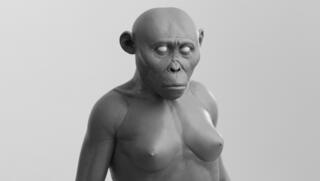Recent technological advancements and genetic analysis suggest that Lucy may have been less hairy or even naked, challenging popular depictions of her with thick fur covering most of her body. A 3.2-million-year-old fossilized Australopithecus afarensis hominin, Lucy was discovered 50 years ago.
Her skeleton is roughly 40% complete, covering 47 bones. The discovery provided insights into our ancestral origins. While Lucy's true appearance remains uncertain, her representations often reveal more about modern cultural influences, biases, and assumptions than her actual physical characteristics.

A reconstruction of Lucy who lived 3.2 million years ago Research indicates that early humans and their ancestors likely remained naked for over 2.5 million years before adopting clothing, driven by factors like thermoregulation, sexual attraction, protection against parasites, and social behaviors.
The loss of body hair, the eventual adoption of clothing, and the development of shame were influenced by evolutionary processes, brain development, social-cultural factors, and pair-bonding strategies for parental care and monogamy. Nudity is a social construct with varying perceptions across cultures and history. The distinction between nakedness and the nude is debated by art critics and scholars, influencing the understanding of nudity in artistic representations.
1 View gallery A reconstruction of Lucy, without hair and pigments Modern depictions of Lucy often reflect societal biases, hi.























